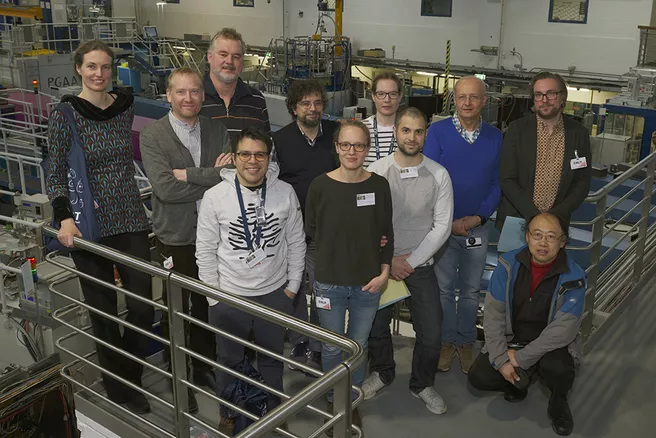Exactly for this reason the MLZ has launched the joint project “New Imaging with Neutron and X-ray Methods for Archaeology and Cultural Heritage” (NINXMACH) in cooperation with the newly founded Lund Institute of Advanced Neutron and X-Ray Science at Lund University in Sweden (LINXS). It is a new initiative which offers “try-out workshops” especially for researchers in the fields of cultural heritage and geology to demonstrate the manifold possibilities of using X-rays and neutrons.
Workshops in Garching and Trieste
Two workshops were available: One in February at the Synchrotron ELETTRA in Trieste and one in March at the MLZ in Garching. Researchers could participate in both to gain experience with X-rays as well as with neutrons. The knowledge, exchange and expertise gained by the scientists should in the future bring also further users to the planned European Spallation Source for Neutron Research (ESS) in Lund.
The in total eleven participants were able to measure their own samples at three different instruments at the MLZ. They got to know imaging techniques at the instrument ANTARES with cold neutrons and at NECTAR with thermal neutrons. An elemental analysis was possible via the prompt gamma activation analysis at the instrument PGAA.
Answering questions that have not yet been asked
Björn Nilsson, archaeologist at the University of Lund, participated, too. He brought a possible Roman figurine and a knife from the Iron Age and examined it on all three instruments. Nilsson is looking for clues about the materials used and the manufacturing process. “The data show the structure of the knife and how it is made of different carbides, with a softer cutting edge and a harder blade. With neutrons we can answer questions we didn’t even know we could ask,” he says. “I definitely plan to come back and examine more samples.”
Burkhard Schillinger, instrument scientist at MLZ, organized and supervised the workshop at MLZ. “The Federal Institute for Materials Testing in Berlin has already asked for such a workshop,” says Schillinger proudly.
